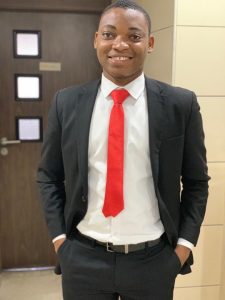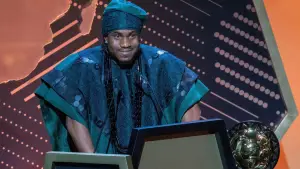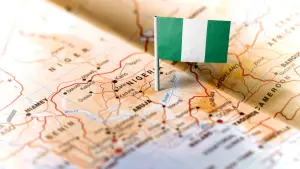Storytelling or Tatsuninya is a very important part of the Hausa tradition. Many children grow up getting told stories that are full of lessons and aimed at guiding them to become responsible people in society. The Hausa people of Nigeria revere storytelling and see it as an integral part of their way of life. Some households in the Hausa society, use the hours after dawn to organize storytelling sessions for children, mostly under the open night sky or in a public parlor where the family routinely meets. An elderly woman who is usually versed and experienced in this art is charged with the responsibility of telling the stories.
Books have been written about these stories. In fact, Abubakar Imam, one of the region’s most famous and prolific writers, gained prominence through such books. In the 1930s Abubakar Imam wrote, at the request of colonial masters, a collection of story books called ‘Magana Jari Ce’ that won him many accolades and subsequently a trip to the United Kingdom in the 1940s. Also, Dr. Bukar Usman has a collection of traditional Hausa folktales titled ‘Taskar Tatsuniya’ , a book that contains no less than a thousand different stories for children.
It is as a result of the above connection between the Hausa people and stories that in the 1990s the Hausa people began producing their own Hausa cinema in a large scale. The movies gained wide acceptance not only in the Northern parts of Nigeria but the country as a whole. As well as other neighboring countries where Hausa is spoken such as Niger, Ghana, Cameroon, Togo, and Benin.
Movies produced in the Hausa Language and by Nigerians are often referred to as Kannywood movies, named after the famous city of Kano. It will interest you to know that the term Kannywood was coined in 1999 when it first appeared in Tauraruwa Magazine. Three years earlier than the term Nollywood which first appeared in New York Times Magazine in 2002.
The Kannywood despite its seeming obscurity in the scheme of things as a result of lack of funding and other technical challenges has been a part of our National Cinematography for quite a while. It is gaining even more traction and popularity these days thanks to the availability of YouTube and other streaming services which makes the distribution of Hausa movies even more commonplace.
It is against the background of an established Hausa culture of storytelling, the history of Kannywood, and the rise of digitally produced Hausa cinema that this essay will discuss the social problems of the north through a Hausa serial film titled Manyan Mata.
Manyan Mata at a Glance
Manyan Mata is a TV series show, created and produced by Abdul Amart. Directed by Aminu S Bono, with Screenplay by Dr Yakubu M. Kumo, and is broadcast on YouTube Channel ABNUR entertainment as well as Arewa 24 Channel. The show is currently in its second season with the season finale aired on 8th January 2024. The third season is expected to return sometime in 2024.
Manyan Mata tells a story of the multitude of Northern Nigerian problems especially those that relate to women, children, and other vulnerable members of society. The spotlight on these problems is shunned through the activities of a voluntary feminist movement group created by two ladies who have been friends since childhood. The story is closely knitted along the friendship of the duo with flashes of how they meander through the avalanche of problems that define the social fabric of Northern Nigeria.
The casting list of the series is star-studded with Hadiza Gabon (Layla) the leading actress and founder of Manyan Mata. A’isha Tsamiya (Nadiya) who is Layla’s friend and a co-founder of Manyan Mata. Fati Washa (Sadiya), Adam A. Zango (Iliya), A’isha Umaira (Faddila), Ali Nuhu, and a host of other big names and faces.

Major Themes of Manyan Mata
Almajiranci
In the first season, the problem of Almajiranci was shunned prominently. Almajiranci is an itinerant form of Islamic learning where young boys are sent far away from home to learn about the Quran and other Islamic lessons. The students of this system are called Almajiri, which is a derivative of the Arabic Word Al-Muhajir (The Migrant). This system has worked well for many centuries in not only Northern Nigeria but the entire Sahel and Sahara regions of Africa.
But over the years especially right at the turn of Nigeria’s oil boom, Almajiranci has been going on a steady spiral. Students, or as they are most commonly called, Almajirai found themselves face to face with the harsh economic realities of the land. Being left to fend for themselves and roaming the street for alms and food. This situation relegated the system’s main purpose– learning – to the background and begging became a prominent feature of the system.
Manyan Mata depicted the story of a boy whose father sent him into the world for Almajiranci and went through all the horrors and suffering that have come to be associated with the system. It was an emotional display that struck the nerves of many viewers from the North and even beyond. Women and mothers who are primarily against the practice of getting separated from their children were through the cinematic displays brought to terms with the fate that awaits their children in the Almajiranci system.
In the story, the founders of Manyan Mata intervened in the story of the boy who was sent to become an Almajiri and reunited him with his parents. The story proposed alternative means through which children can learn Islamic knowledge without having to travel to distant places where their well-being can not be adequately chaperoned. Modern Islamiyya schools are already ubiquitous in the north, with the first of their kind being established by Abubakar Imam in the 1950s in Zaria.
Domestic Violence
Marital issues are one of the three most common themes in Hausa cinema. The other two are Romantic love stories and Music. Expectedly, as no Hausa cinema will be complete without delving into this important aspect of the Hausa demography, Manyan Mata made an interesting incursion into the marital life of common Hausa households.
Hafsat Idris (Na’ima) and her husband Sadik Sani Sadik (Garba) became the flash points of this didactic display of what ensues between husbands and wives in a system where men are given all the powers over women and women are told to endure all the sufferings thrown at them in perpetual servitude. The military training soldiers go through in camps is milder than the rigors Garba subjected to his patient and obedient wife.
The stress of pregnancy did not make her husband develop any soft feelings towards her, instead, it even emboldened him to invent newer and crueler ways of torturing her. All these happened while Na’ima’s father fell completely in support of his son-in-law’s treatment of Na’ima. The poison of patriarchal tendencies among Hausa men was hyperbolically displayed through cinematography in these plots.
In the end, Na’ima lost her pregnancy with no care or concern about her postpartum health and returned to a house that was immune to every shade of happiness. The tipping point was reached when Na’ima resorted to drug abuse as solace to her nightmares which further alienated her from her husband and her father. She was dismissed by her husband in a dishonorable divorce and thrown out of her father’s house for bringing shame to his family as a divorcee and drug user.
Reprieve came for Na’ima when chance joined her with Manyan Mata. She was returned home and her father received a heartwarming lesson on all that is wrong with the patriarchal mentality he operates on. This was achieved through a rich debate between the father and an Islamic scholar, who happens to consult for Manyan Mata. The exchanges that led to Na’ima’s father’s change of heart, is perhaps the pinnacle of Manyan Mata’s attempt to use pedagogy in advocacy. Watching a staunch and stone-cold man melt at the feet of hard Islamic facts must have brought succor to millions of women who sat before their screens to watch that memorable scene.
Power and Politics
The northern region of Nigeria is heavy when it comes to politics, having produced the most number of Nigerian leaders and still continues to hold enormous power over the political landscape of the country. Although Manyan Mata did not typically deliver into the mainstream political ideologies of the north, it did touch on the fringes of its manifestations and execution.
The story made bold attempts to create a connection between the multitude of Almajirai – or as they are more often called, out-of-school-children – with how the political class uses them to make ends meet through violence and subjugation of political opponents.
The elder brother of the boy who was sent for Almajiranci happened to be the piece through which the creators of Manyan Mata made the connection. Yaya Audu serves as a focal point through which the activities of thuggery, politics, and social advocacy of Manyan Mata perfectly intersect.
This intersection provides further talking points and a basis for analysis as the founder of Manyan Mata, Layla found herself dragged into the murky waters of politics. As her supporters opined, why do good from the sidelines when you can actively enter the fray of politics where your advocacy can translate into legislation and implementation of policies?
But the politics of Nigeria and Arewa in particular is not for the faint hearted and least of all. Women have little room for participating in politics beyond mobilizing unsuspecting women with pieces of wrappers, detergents, spaghetti, and Maggi on election eve to woo them into voting for parties that do little to nothing to change their fortunes. Layla jumped with her eyes open but unaware of what she was destined to find.
The albatross hanging on the story’s main character is the shadow of her father’s dirty past which has been unearthed to destabilize her momentum. How the story proceeds from this climax will determine to large extent its success in converting the goodwill of advocacy into meaningful governance for the many problems bedeviling Arewa.
Gender, Feminism and Patriarchy
The theory that best describes the foundational blocks of Manyan Mata’s story is the Gender theory. With the main characters chosen to be women, in a society where women are more often than not known to be taking the back seat, the stage was set for a promising saga.
Many of the critics of the series base their arguments on the show’s prospect of shedding light on the positive aspects of feminism and highlighting the downside of toxic patriarchy.
But to counter such uncharitable criticism, the makers of Manyan Mata introduced a utility character played by Falalu S. Dorayi (Amir), who is portrayed as a learned Islamic scholar in touch with the basic teachings of Islam. Ya Amir serves the purpose of consultant and chief advisor on Islamic matters to Manyan Mata. This style of storytelling happens to be compelling as criticisms thrown at the show get handled by Amir with facts and acceptable laws of Islam.
Through Ya Amir, the sharp distinction that exists between gender roles especially as it relates to how married couples run households was thoroughly modified. Manyan Mata created powerful scenes where a husband is seen to be helping his wife in the kitchen and adequately nursing her when she is ill. These are practices that are abominable or somewhat taboo in typical Hausa settings that practice concentrated patriarchy.
To pass the point of blurring the lines that exist between genders, Manyan Mata, as the name implies used the story of two women to show the height and extent of women’s power in doing good in society. Manyan Mata placed women in the driver’s seat and took us for a drive through the streets of Hausa society that have been indelibly marked by signs of men’s dominance.
Additionally, to make the story more acceptable and relatable to the viewers of the show, Layla and Nadia were both shown to be married. This is equally important because, in Hausa society, anything a woman achieves is often counted less when single and unmarried. The creators of the show understood this social dynamic and left no room for twisted interpretations. Because had Layla been shown to be unmarried, critics would find room to speculate that Manyan Mata is a show that is discouraging marriage among young women.
However, as the drama continues to be built around the marital landmines that are building and brewing in the houses of Layla and Nadia through the activities of their husbands, it seems very likely that the story will not end without scarring the delicate balance of feminism and patriarchy, which the show has so far tried very hard to blur.
Concluding Remarks
As the show continues to delve deeper into the very social fabric that makes Hausa society what it is, viewers will continue to be reminded that the evolutions of societies are not things to oppose fiercely but to embrace with open arms. Islam and culture can coexist when the right balance is found and Manyan Mata has been a show constantly seeking to find that meeting point to create a story that resonates with an audience who are more used to stories told in fairytale manner like Tatsuniya than getting painfully reminded of their realities as Manyan Mata seeks to do.
The story of Manyan Mata is understandably uncomfortable to a section of Hausa society and rightly so. For any movement that seeks to highlight against pervasive oppression and subjugation of subjects is bound to face opposition and criticisms, so will Manyan Mata continue to be assessed through such suspicious lenses.
Unsuspecting viewers will however continue to hope that the show ends on a solid footing and achieve the aim of advocacy that it is out to do without much blemish to its reputation.
Here is to hoping that Manyan Mata continues to highlight the ills of Hausa society respectfully and sensibly for the betterment of all.





